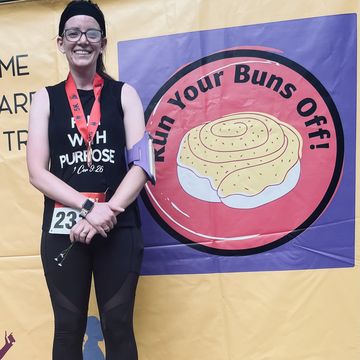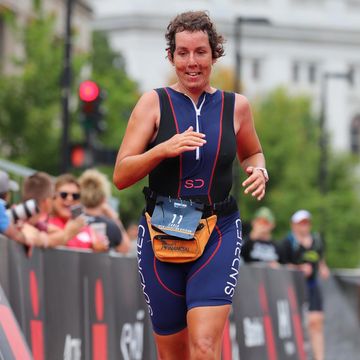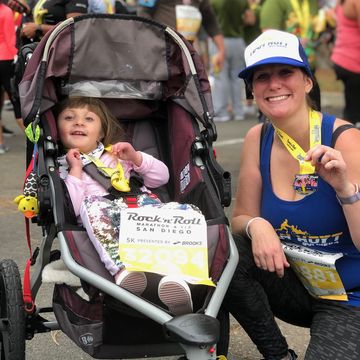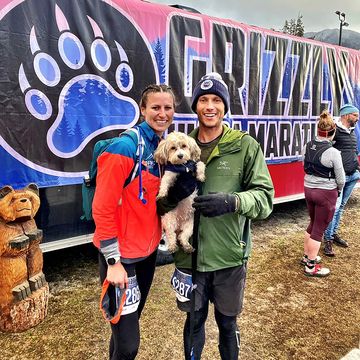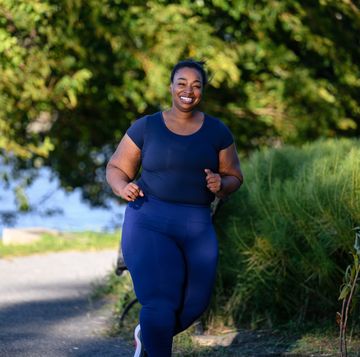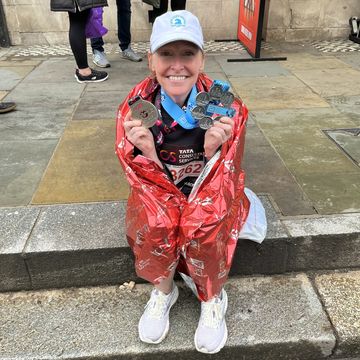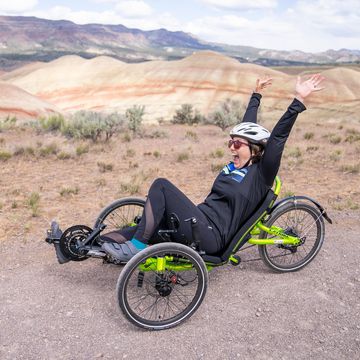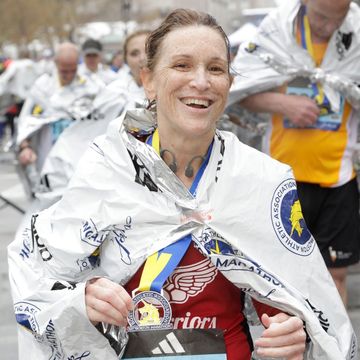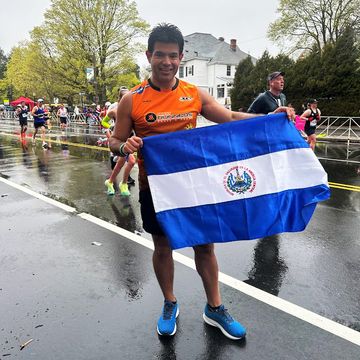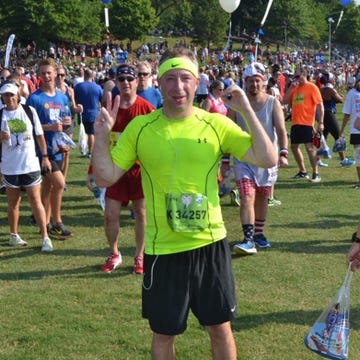Name: Matt Magnuson
Age: 48
Hometown: Wichita, Kansas
Occupation: Owner, iCRYO Recovery and Wellness, and vice president of call center operations, Extended Stay America
Time Running: 12 years
Reason for Running: Running began as a method to help me lose weight before leading me to transform my life. Through setting and accomplishing goals, running became a passion, which produced more benefits beyond fitness.
I began running in early 2012 around the time my daughter was born. My life up until then was full of bad habits and laziness—I knew it wasn’t sustainable. I was never an active person and ballooned up to 237 pounds by my mid-20s, and was also a heavy beer drinker for much of that time period, as well. When I was 36, I decided enough was enough, so I began focusing on healthier eating and being more active.
I thought at the time if I could run three miles, four times per week that it would help me lose weight. But after reaching three miles I wanted to go farther, so I began adding more mileage until I ran my first half marathon 15 months later, and after losing 72 pounds. (I would eventually lose another 20.)
More From Runner's World

I started by using a couch to 5K training plan to run three miles within nine weeks. I continued to run three to four times per week for several months before adding more mileage. My first race was a local 10K, the Wichita River Run in June 2012. I then completed the Prairie Fire Half Marathon five months later in October, followed by the Prairie Fire Marathon the following year in October 2013. I became passionate about signing up for races, training, and competing. I was hooked on the benefits of running.
However, things changed when I was struck by a drunk driver in a car accident on January 3, 2018. I was driving, and stopped at a red light behind a truck when I was struck from behind. The collision forced my car into the back of the truck causing a second collision. This left me with spinal stenosis (a condition that puts pressure on the spinal cord and nerves that travel through the spine) and severe pain for 32 months.
I was not able to exercise much for the first year after the crash, but gradually incorporated more exercise a year later. At first, I was able to go out for short and slow runs but races and marathons were on hold.
After more than 100 doctor’s appointments, my injuries were declared permanent with surgery as the only option. I declined surgery and decided to begin my own recovery plan in June 2019.
I focused on cryotherapy (which involves about three minutes in a chamber set at negative 170 degrees Fahrenheit) and DDP Yoga—a type of workout combining traditional yoga poses with physical rehab movements and calisthenics—to improve my flexibility and range of motion, while strengthening the core. Cryotherapy helped me recover quicker from long runs and races, and DDP Yoga strengthened my quads, glutes, and abs to better support my spinal injuries.
I never would have dreamed it, but in October 2021, I completed the Prairie Spirit 100K. Since the accident, I have also run a marathon or a greater distance 49 times.
I’ve also supported nonprofits through my running. Unfortunately, I’ve known several people whose lives have been impacted by blood cancers, so I was motivated to support the Leukemia & Lymphoma Society by running marathons to raise money for research. In January 2023, I started the goal of training to run 11 marathons in 11 weeks, and have raised thousands for the LLS.
Today, I run five days a week, mostly three to six miles, with a long run on Saturday. I also complete three hours of DDP Yoga per week and average 50 push-ups, sit-ups, and bodyweight squats per day. I also do two Orangetheory fitness classes a week when I am not training for an ultra.
Before running, I was very undisciplined in my life, and running helped me see the results of a plan executed with hard work. Training for a marathon builds discipline, which transferred to other areas of my life.
Overall, running was a first-hand illustration of action plus effort equals results. If I wanted to lose weight or train for a marathon, I had to relentlessly stick to my training schedule. I developed the habit of waking up at 4:30 a.m. to ensure I completed a solid workout. Running was more than just a 92-pound transformation—it was a total life transformation.
These tips have helped make my running journey a success:
1. Cross train
Cross-training is critical for injury prevention and will make you a stronger runner. Your core strength will impact your running posture. I thought this was a myth as a new runner and didn’t cross-train much the first four years. My running abilities improved significantly after six months of my supplemental workouts.
2. Focus on recovery
Running puts stress on our joints and muscles, but a solid recovery plan will help you bounce back quickly. Runners have access to recovery options like never before. My routine consists of cryotherapy sessions to reduce inflammation, compression therapy to address lactic acid, infrared sauna for muscle relaxation, and a weekly IV drip for supplements and hydration.
3. Find community
My running mentor Tony Brown says, “Runners make the best friends.” He’s absolutely right. Join running groups instead of running solo and you’ll learn several best practices along the way. You’ll meet several like-minded people who will make running more exciting. The running community is a supportive group of people, whether you run a 14-minute mile in a 5K or a sub-3-hour marathon.
4. Set goals and keep track
I track my fitness goals on an Excel spreadsheet to hold myself accountable. While developing self-accountability through improving health and wellness, it motivated me to take the same actions with my spiritual life, finances, marriage, and parenting. When you make a habit of crushing goals, it’s harder to accept self-limiting beliefs and excuses.
Matt’s Must-Have Gear
→ Altra Lone Peak 6: This shoe combines comfort with strong protection from rocks and tree roots. It has zero drop with a wide toe-box to help me run with optimal form. The grip and traction is more than effective on technical trails.
→ HydraQuiver Vest Pack: This pack is practical and comfortable without bouncing or chafing. The pictures undersell the product; this pack is loaded with storage.
→ Maurten Gels: I feel more energy from Maurten’s gels than any other option I’ve tried. The flavor is not as sweet as other gels, too, making it easier to swallow and digest.
Emily Shiffer is a freelance health and wellness writer living in Pennsylvania.


